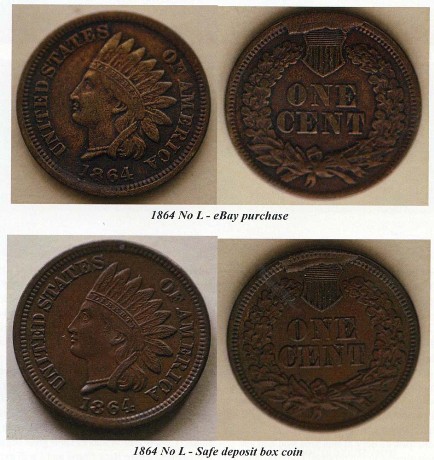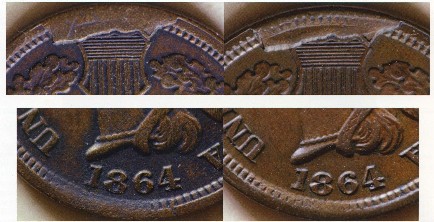Noble | Presidents Letters
newpres43
Fly-In Club's President's Letter
by Chris Pilliod
43rd President's letter by Chris Pilliod
This is my 43rd letter as President and hoping everyone is having a fulfilled and safe summer of 2012. As far as numismatics are concerned, the new coinage act has been consuming a lot of my recent time here at Carpenter. Mint trial strikings have now concluded with a lot of additional work lying ahead. An overarching concern with moving ahead is die life. But what is curious is the modern mint engineer doesn't have any idea what poor die life even is.
In discussions with the Mint, they are embarking on various paths to improved die life , better die finish, coatings on dies as well as blanks and so on. If todays Mint metallurgists think they have it tough, their counterparts during the Indian cent series, especially the early years, must have had their heads spinning on a daily basis. While today's engineers at the Mint start crowing about die life if one doesn't make it to 200,000 strikes, back in the Flying Eagle and Indian cent years some dies lasted literally just hundreds of strikes.
Undoubtedly, as soon as they have the fresh dies in place bammmmm....one goes bad. In my head I can hear the press operator yelling, "would someone please figure out what is going on !!!"
We discussed this in the last Ledger issue but a recent purchase on EBAY led to interesting proof of how another error occurs. Rotated die strikings appeal to a limited number of specialists in the series but can be fun to collect. Of most noteworthy are those strikings which exhibit medal alignment, or 180-degree rotation. Die rotations in the Indian cent series are relatively common before 1870, one 1868 Proof Indian Cent shows complete medal alignment. Around 1870 or shortly after this time period fixes were in place to make rotated dies much rarer.


A few weeks ago on eBay I spotted a nice reverse cud on an 1864 bronze. It was a nice cud above the shield which looked familiar. Without researching it I slapped a strong bid oon it, winning it for considerably less. After I received it, I went to my safe deposit box to discover that many, many years before I had purchased a nice chocolate brown AU58 of the exact same reverse cud at a Michigan State Convention, in fact, believe it or not I recall I cherrypicked the piece, which is extreamly unusualfor a nice cud.
But as I began to study both pieces closer I realized an interesting revelation was unfolding. The piece from eBay was actually a "full" cud as compared to the example from the Michigan State show which was unquestionably retained. When a piece of die steel fractures, and thereby forming a cud, the piece itself dos not always fall completely away from the die to form a "full" cud.
If it happens to be the anvil die gravity often allows the piece to stay in place and continue striking coins. All the time the piece grinds away at the die, making the cud deeper and deeper. At some point if either gets knocked out of the die chamber, sticks to the coin and leaves, or wares away to meaningless function. For the Flying Eagle series, the anvil die was the obverse with the eagle, but for the Inian cent series the reverse die was always the anvil die.

So far the 1864 bronze cuds the piece did not fall out immediatly but continued to strike coins. However, at some point in time the piece infact did get spit out and no remnant denticles can be seen in the eBay full cud example. But what is interesting is actually the obverse. When a cud grows large enough a common resultant phenomenon is that the area opposite the cud shows weakness as planchets cannot fill the large void. The weakness can be seen on the denticles below the date 1864. Interestingly for the retained cud less volume was needed to fill the void and the resultant weakness on the obverse beneath the date affect only a few of the denticles.
Compare the large area of the full cud obverse and you will quickly see weakness in about twice as many denticles. In addition, if you look closely at this area you can see that they are offset on each piece. On the retained cud example the weakness in the denticles is centered below th "8" and the "6" but by the time the cud piece fell out the weakness centered between the "1" and the "8".
Although slight, this movement can only happen in one of two ways. First, if a new obverse die is placed into the anvil position and displaced at a different angle than the retired die, or secondly if one die loosens and rotates in the course of of usage. The first cause can be quickly rulled out for common sense reasons-why stop the pressand replace a perfectly good obverse die and leave a defective reverse die in service?
So what transpired in 1864 is a neat example of a die that fractured and then began to rotate with a cud still in position. The obverse die cannot rotate, for if it was that loose, it would simply fall awy from the hammer chamber and make a mess of things, or perhaps create those off-centered clashes we see on Indian cents. Which makes for a great segue for the next issue of the Ledger, where Rick Snow and I will explore this very issue in detail.